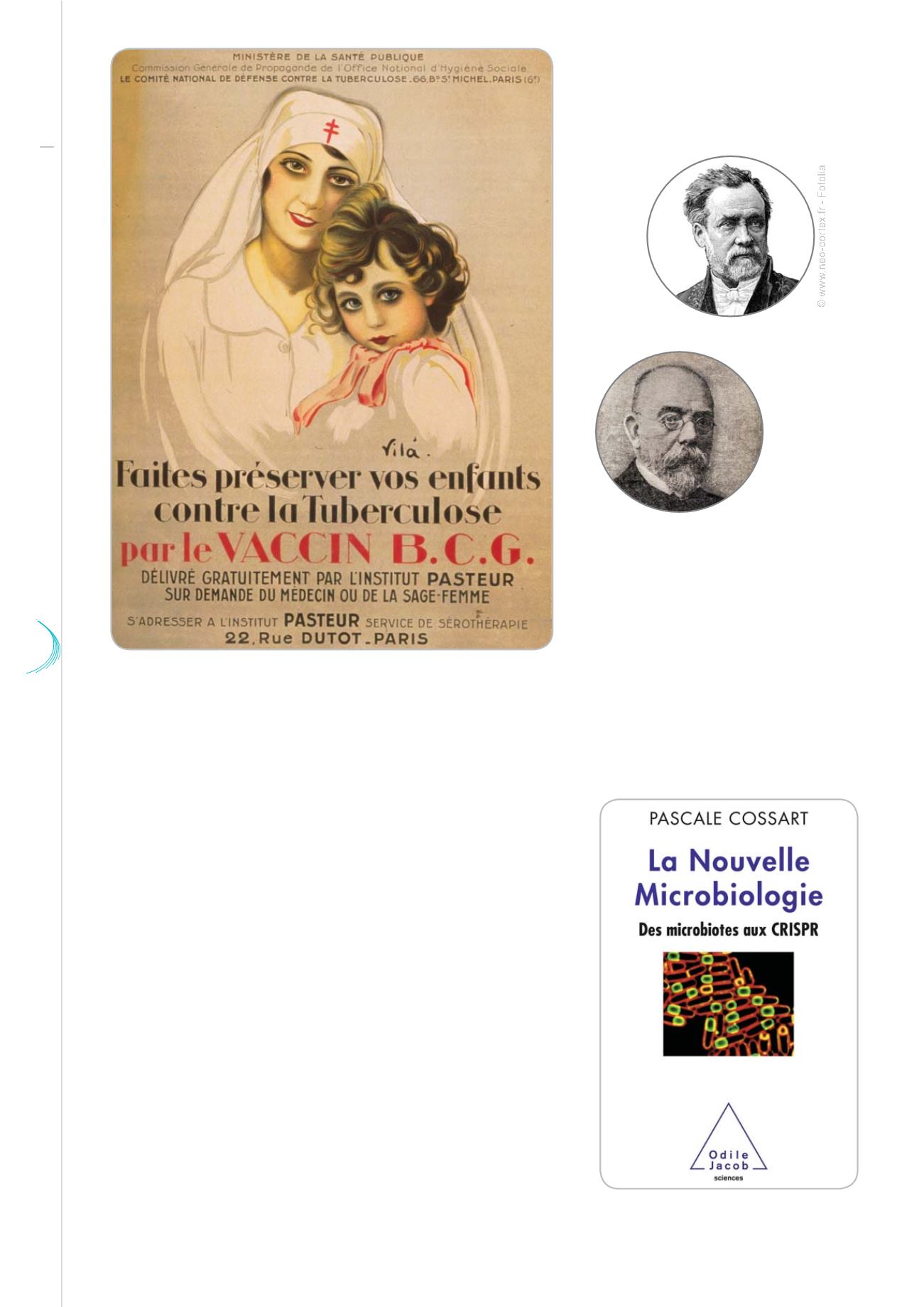

37 38
20
La Lettre
To better understand howmicrobiology
has dramatically changed during the
last decades (P. Cossart, Odile Jacob
Éd., Paris, 2016)
© Archivart - Alamy
© Juulijs - Fotolia
Louis Pasteur and Robert Koch,
the fathers of microbiology
Their knowledge on infectious
diseases,
and
particularly
bacterial diseases, was of
course quite empirical, and it is
only with the discovery of DNA,
the birth of molecular biology
and its applications using non-pathogen bacteria, in particular the
famous
Escherichia coli
, that a new period in the understanding of
infectious diseases began at the end of the 1980s.
The virulence factors that pathogenic bacteria produce started to
be identified, as well as how toxins act and how some bacteria
enter the cells and disseminate in the tissues, developing an
incredible variety of strategies to subvert the immune defenses of
the infected host. Very quickly, cell biology and its various types
of microscopy – fluorescence microscopy, electronic microscopy,
video microscopy – enabled microbiologists to observe infections
in real time. Needless to say that, to help in this molecular hunt,
genomics entered just before the beginning of this millenium. The
complete sequences of bacterial genomes of various species were
published one after the other. These bacterial genomes displayed a
great variability and their analysis highlighted the basis for bacterial
Louis Pasteur (1822-1895)
Robert Koch (1843-1910)


















